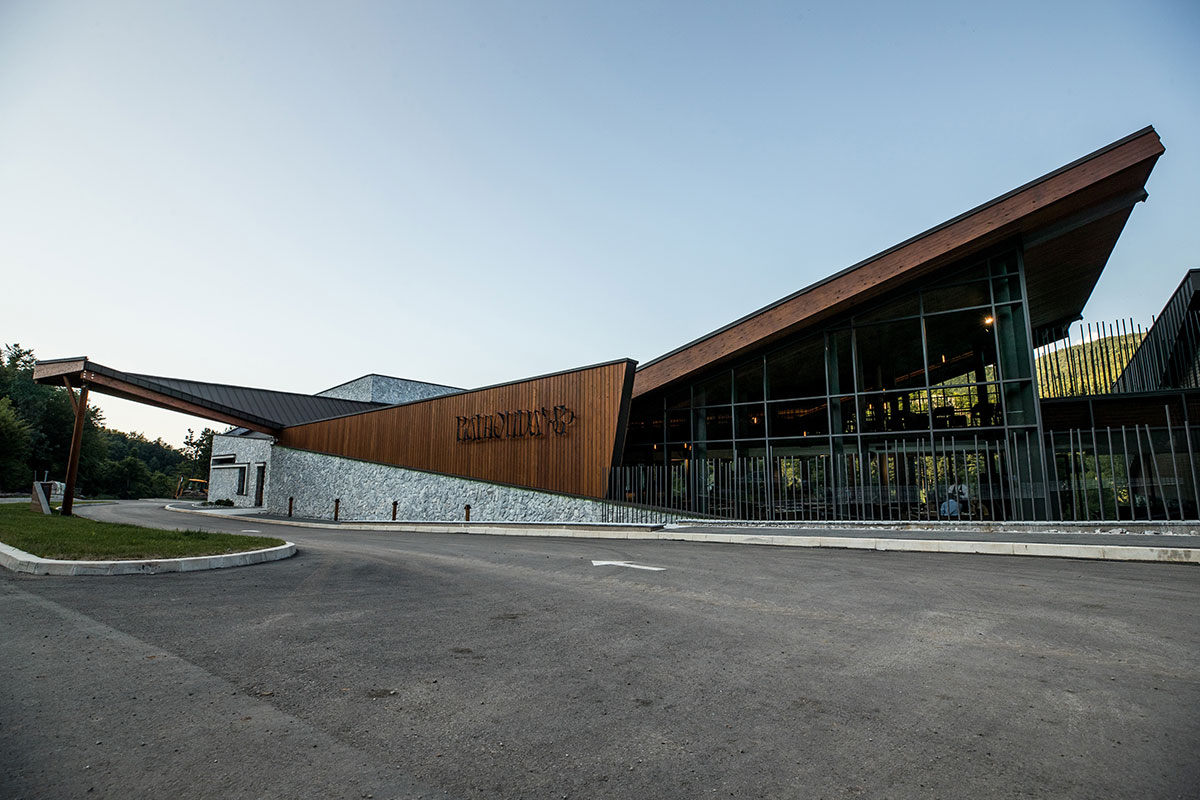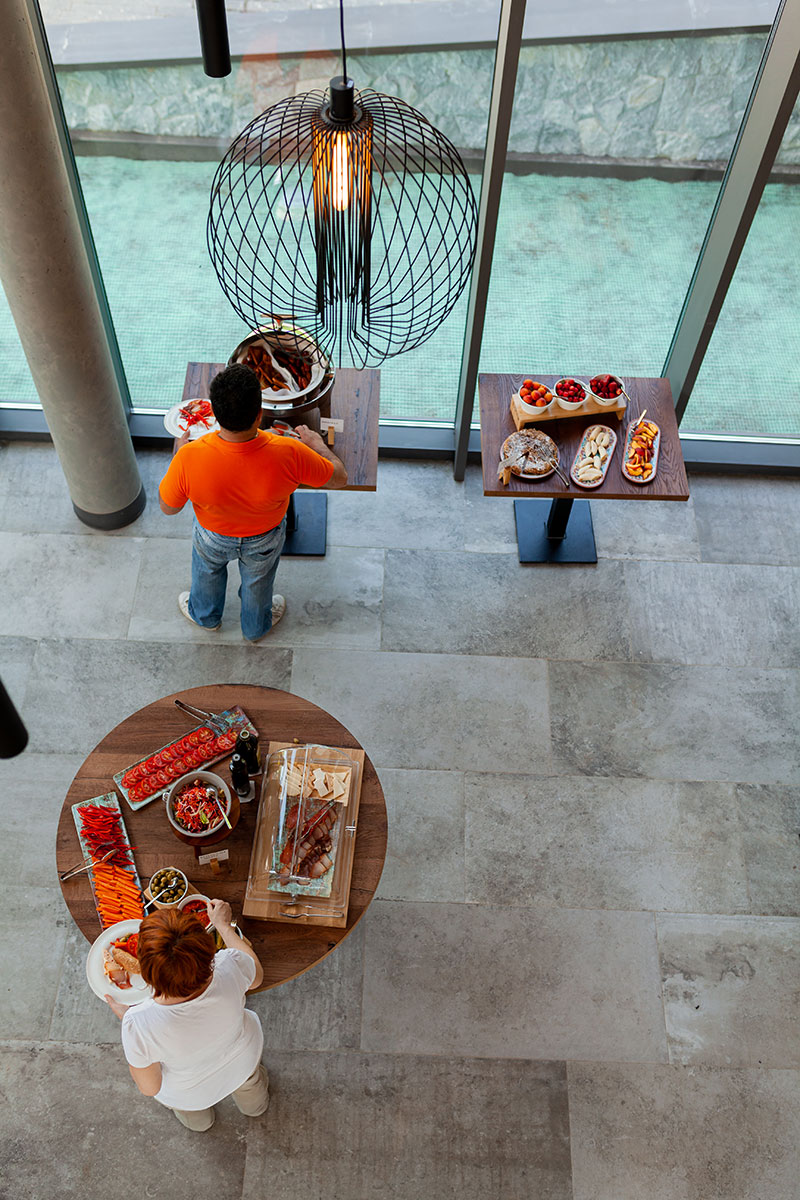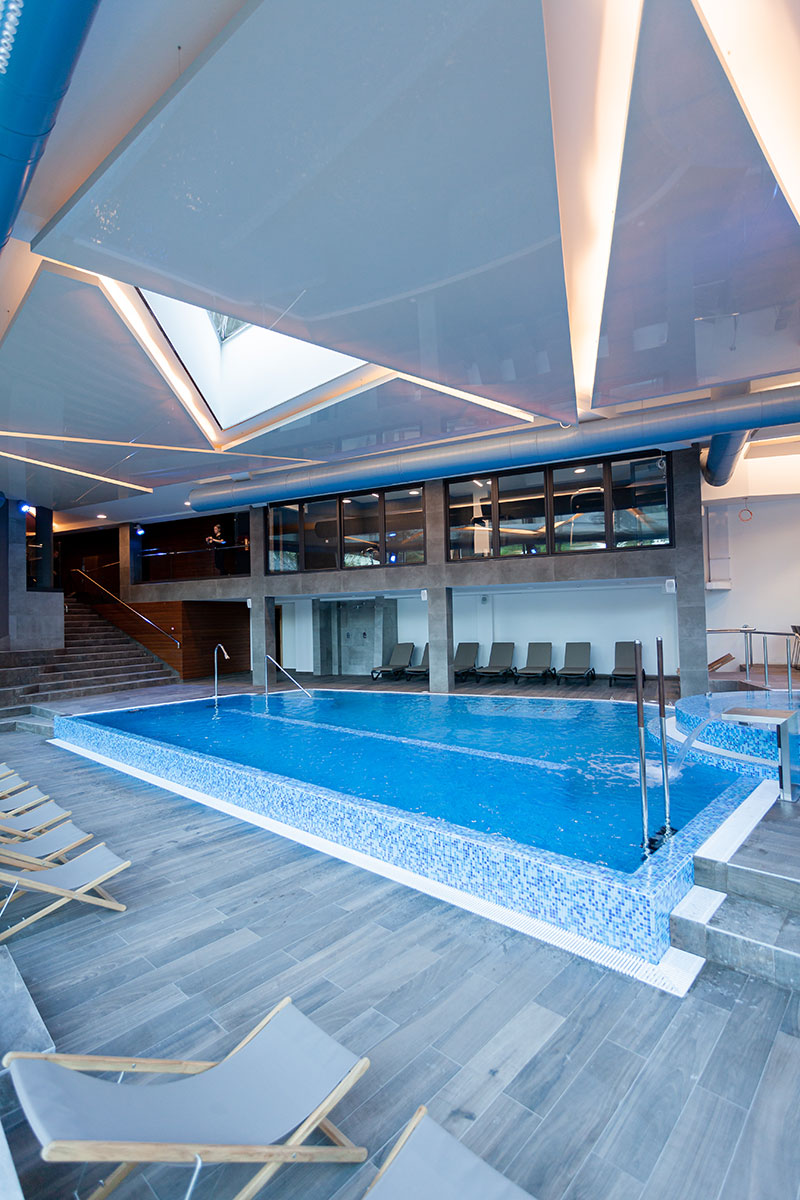Hotel Ramonda Rtanj
Ramonda je cvet nežnoljubičaste boje koji poseduje čudesnu moć: čak i kada počiva na listu herbarijuma samo je kap vode dovoljna da ponovo oživi. Jedan od retkih predela gde ovaj cvet feniks raste je planina Rtanj. Nedavno je, podno zagonetnog rtanjskog vrha oblika pravilne piramide, otvoren elegantan butik hotel – i imenom i sadržajem inspirisan biljkom koja vaskrsava.
Mnogo je neobičnih pojava vezano za Rtanj: počevši od njegove savršene, trostrane piramidalne „kupole“ za koju je teško poverovati da je tek nasumično delo sila prirode, preko egzaktno izmerenog postojanja posebne vrste „nehercijalnog zračenja“, električnog potencijala koje je na pojedinim mestima tri do četiri puta veći od uobičajenog… Zabeležena je pojava „putnika kroz vreme“, fotografisani leteći tanjiri, a činjenica je da zbog atipičnog gravitacionog polja avioni ne nadleću Rtanj. Merenja su pokazala da je vrh planine tačka koja prima energiju koja se potom, kroz svojevrsne „dimnjake“, sprovodi do mesta koja prikupljenu energiju emituju. Postoje i „naučnofantastične“ teorije da je planina iznutra šuplja, da je baza vanzemaljcima, prapostojbina boga Ra… Zbog svega pobrojanog i još mnogo toga izostavljenog, Rtanj je mesto u čije tajne nastoje da proniknu, kako naučnici, tako i mnogi drugi zanesenjaci i tragači za alternativnim tumačenjima nesvakidašnjih fenomena.
Rudnik za ugled
U naselju gde je izgrađen hotel Ramonda nekada su živeli rudari. Priča započinje u 19. veku kada se iz Moravske u Srbiju doselio Jevrejin Samuilo Minh. Osnovao je fabriku tekstila u Paraćinu, a na nagovor sina Juliusa, ostvareni profit je počeo je da ulaže u rudarstvo. Minhovi su dobili koncesije za eksploataciju rtanjskih rudnih polja, a prvo okno su otvorili 1902. godine. Zapošljavali su domaće stanovništvo, a stručnjake su dovodili iz inostranstva. Naselje je naraslo na oko dvehiljade stanovnika, ali nije bilo ni nalik na slična mesta u Srbiji i Evropi. Za radnike i njihove porodice, Minhovi su izgradila udobne stanove, osnovali školu, otvorili ambulantu, podigli Sokolski dom koji je imao i bioskop… Julijusova supruga Greta, predano je radila na oplemenjivanju prostora. Njenom zaslugom nikao je veliki park, podignuta staklena bašta, zasađeni ružičanjaci… Greta je bila omiljena ličnost stanovnika rtanjskog rudnika kamenog uglja zbog podrške i pažnje koju je poklanjala deci i porodicama rudara.
Od uglja do planinskog hotela
Čini se da je povest ovog rudnika u kojem se, osim imperativa da se dođe do profita, vodilo računa i o dobrobiti zaposlenih i kultivisala priroda, upamćena i da su se mnogo decenija nakon njegovog gašenja pojavili sledbenici. Po onome što smo videli i doživeli, uprava Ramonde je nastavljač poslovne filozofije porodice Minh. O tome svedoči i njihova „izjava o namerama“: „Želimo da naselje Rtanj ponovo oživi kao ramonda, ali ovog puta, umesto rudnika da imamo rudnik dobre atmosfere, rudnik dobre usluge, rudnik kvalitetne hotelske ponude.“ Zamisao je da hotel bude stožer razvoja ovog kraja, a to se vidi i po tome što je osnovana zadruga koja za hotel proizvodi organsku hranu i što se na meniju nalaze poznati gastronomski proizvodi ovog kraja poput krivovirskog kačkavalja, knjaževačkih vina, rtanjskog čaja.
Ramondini ljudi
Uobičajeno je da medijsko predstavljanje hotela u fokusu ima smeštaj i wellness sadržaje, ali u slučaju ovog hotela, priča započinje s ljudima. Jadranka Stepanović je vlasnica Ramonde i za razliku od mnogih investitora koji imaju manir da se mešaju u sve i svašta, ona se posvetila odabiru pravih saradnika kojima je dala odrešene ruke. Tako je čak iz Meksika uspela da dovede Radomira Samčevića, uspešnog konsultanta za hotelski menadžment. Njegova deviza: „Najlakše je biti najbolji“ prihvaćena je od zaposlenih – šezdesetak mladih ljudi iz okolnog Boljevca i Sokobanje. Kuriozitet je što je obuku Samčević započeo tako što je kandidate najpre odveo u jedan hotel u Vrnjačkoj Banji da tamo budu gosti, jer gotovo niko od njih nikada nije boravio u hotelu, niti imao približno odgovarajuće obrazovanje. Da nismo čuli ovo svedočenje, pomislili bismo da u Ramondi radi krem hotelijerske profesije. Za direktora hotela izabran je iskusni Nikola Jakovljević, šef kuhinje je Miloš Ristić koji ima zavidnu internacionalnu karijeru, a upoznali smo i mladog bartendera Filipa, koji se nakon samo tri meseca rada popeo za stepenik više.
Eho okoline u arhitekturi
Ljiljana Rebronja, direktorka časopisa „Turistički svet“ koja je za predstavnike brojnih medijskih kuća organizovala ovo promotivno putovanje, unapred nam je pripremila osnovne informacije. U najavi je, između ostalog, navedeno da hotel ima četiri zvezdice i Spa centar što odmah u svesti stvara predstavu o nekoj vrsti neskrivene raskoši, ali sve je upravo suprotno. Spoljna fasada od kamena i drvenih oplata više nalikuje na planinarski dom. Još veće iznenađenje je unutrašnost hotela: recepcija, bar i restoran, zajedno sa terasom projektovani su kao jedinstven prostor čiji „gabarit“ i prave linije „presecaju“ rafinirani detalji. Efekat ove kombinacije „pravolinijskog i zakrivljenog“ je zadivljujući: istovremeno osećate celinu velike „hotelske pozornice“, ali i intimu svake njegove pojedinačne „lože“. Najlepše od svega je obilje svetlosti i pogled na Ramondino okuženje. Od Vlade i Valerija Milić, bračnog para koji je projektovao hotel, saznajemo da im nije bila bitna autorska ideja već sam kontekst. „A kontekst ovog naselja i prirode koja se „slila“ na našu lokaciju nije mogao biti bolji i podsticajniji. Izborom prirodnih materijala, Ramonda se stopila i velikim staklenim površinama povezala s prirodom, što će doprineti i da njeni gosti budu u savršenom skladu sa njom. Ako rezultat koji je pred vama odzvanja atmosferom moćne okoline, onda znači da smo bili iskreni u našim namerama,“ rekao nam je Vlada Milić.
Lepeza ambijenata
Ramonda spada u butik hotele i može da primi do devedeset gostiju. Sobe i apartmani su ukusno opremljeni i smirenog su dizajna. Naročita pažnja posvećena je osvetljenju. Dupleks apartman u kojem sam boravila, osim visećih i stonih lampi, ima na stropu „zvezdano nebo“ – pregršt malih sijalica koje vam prigušenom svetlošću ulepšavaju noć. Iako istovetnog dizajnerskog rukopisa nijedna soba nije ista. Spa centar ima sve uobičajene sadržaje: zatvoreni i đakuzi bazen, finsku i tursku saunu, sobe za masaže. Ono što je izuzetno jeste dnevna svetlost koja u ovu zonu opuštanja dolazi kroz spoljne prozora i sa staklenog krova u obliku piramide – što je „arhitektonski omaž“ znamenitom rtanjskom vrhu. Jezero u dvorištu na prvi pogled nalikuje na tipičan spoljni bazen, ali to je varka. Reč je o jedinstvenom primeru u našoj zemlji gde se voda prečišćava uz pomoć algi i vodenog bilja. Jezero i vodeni vrt sa rascvetalim lokvanjima su pravi biser među ambijentima Ramonde.
Tamo gde kamera podrhtava
U neposrednoj blizini nalazi se mesto koje se zvanično zove Vrelo, a ljudi koji ga pohode često ga nazivaju i Svetilištem. Reč je o manifestaciji već pomenute pojave da se energija koju prikupi vrh piramide „sprovodi“ do određenih tačaka koje tu energiju emituju. Vrelo je pronašao i obeležio akademik Jovan Davidović, a zračenja je merio i ispitivao međunarodni stručni tim. Utvrđeno je da ovo, oku nevidljivo „isijavanje“, podsticajno deluje na fizičko i psihičko zdravlje, pa je Vrelo postalo svojevrsno mesto hodočašća. Imali smo priliku da se na licu mesta uverimo da „energetski krug“ poseduje silu. Kolega iz naše ekipe odložio je svoju kameru na drveni sto postavljen tik uz Vrelo. Istog trena počela je sama od sebe da vibrira i podrhtva, a mi smo je u čudu posmatrali. Stajala sam bosa na ovom nesvakidašnjem mestu i nastojala da i sama osetim vibraciju koja pokreće kameru. Nisam podrhtavala ali sam se, vraćajući se ka Ramondi, osetila neobično lakonogo i rasterećeno.
Utisci sa ovog putovanja su i lepi i nesvakidašnji i obećavajući. Hotel Ramonda je maestralno osmišljen i predstavlja onaj neophodan uslov za dalji razvoj Rtnja, koji je prošle godine proglašen specijalnim rezervatom prirode. Planira se izgradnja gondole do vrha planine, obnova parka Grete Minh, programi obilaska brojnih kulturnih i prirodnih znamenitosti u okruženju: antičke carske palate Feliks Romulijana koja je na listi Uneska, Sokobanje, spektakularne Bogovinske i Lazareve pećine, etnosela Ilino, knjaževačkih vinarija…
Tekst: Milena Mihaljčić
Foto: Hotel Ramonda &Arhiva BelGuest Magazina

















Social Network